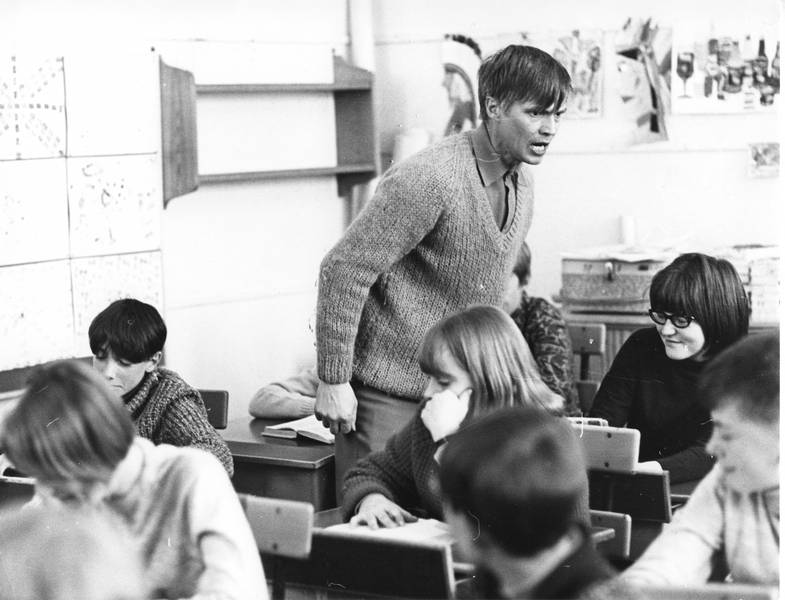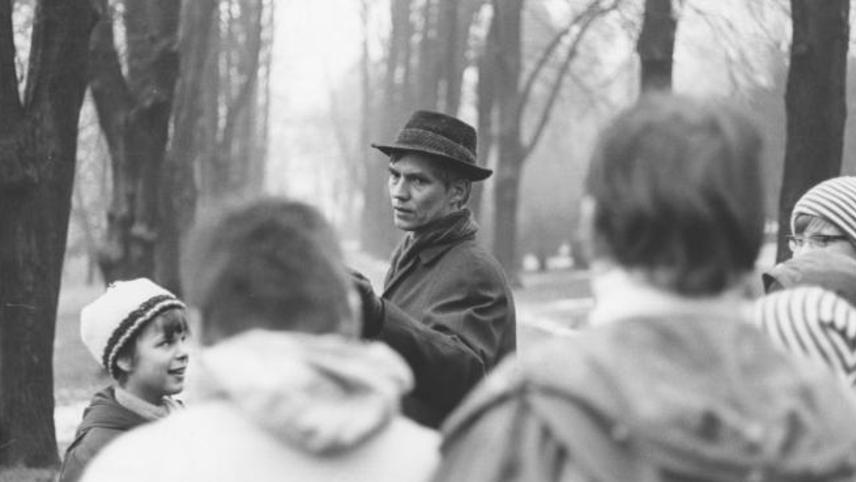I love old movies and Swedish cinema in general, with all its gloom and doom. It’s been three years since I watched this particular movie, and I still get the chills when I think about it (and who knows, maybe you will too).
What happened to me in all these years? Everything and nothing. I suffered a heartbreak. I moved 300 km across Italy and started a new life from scratch again, although I’m not exactly a youngling anymore. Things are hard. I’m doing lots of things that I haven’t done before, yet it still feels like I’m failing at life, at least as much as our protagonist.
Yes, this movie is incredibly relatable and personal for me. That’s why I wanted to write about it, and that’s why it took me so much time, even just to get started.
Who Saw Him Die?
(Original title: Ole dole doff)
1968 ‧ Drama ‧ 1h 50m
Awards:
- 1968 Winner of the Golden Bear at the Berlin International Film Festival
- 1968 Winner of the OCIC Award
- 1968 Winner of the Interfilm Award – Otto Dibelius Film Award
- 1968 Winner of the UNICRIT Award
- 1968 Winner of the IWG Golden Plaque
Director: Jan Troell
Screenwriters: Bengt Forslund, Jan Troell
Based on Clas Engström’s novel: Ön sjunker (published in 1957)
A Notable Piece of ‘60s Swedish Cinema
While Ingmar Bergman ruled the ‘50s with masterpieces like Smiles of a Summer Night and The Seventh Seal, a new generation of filmmakers emerged in the ‘60s, trying to challenge the Swedish cinematic landscape. Among them was Jan Troell, one of the most unique storytellers in Swedish film history.
Well-known for merging realistic portrayal with poetic photography, Troell started his adult life as an elementary school teacher in the 1950s. As he mentioned in an interview, he chose this profession because he didn’t know what he wanted to be, although he had a passion for photography since he was a teenager. He began working on his first professional film in 1964, during which he met Bengt Forslund, with whom he collaborated on most of his feature films, including Who Saw Him Die? (Ole dole doff, 1968).

A Unique Perspective
Troell and Forslund worked on the screenplay together, based on Clas Engström’s novel, Ön sjunker. The story portrays a teacher’s power struggle in and out of the classroom. Opposed to the common students’ perspective, this story is told from a teacher’s point of view. As both screenwriters were elementary school teachers, they were very conscious about the way they wanted to portray the teacher’s life, including all aspects – students, parents, colleagues, and even the spouse – everyone contributes to the protagonist’s misery.
As Bengt Forslund mentioned in his article, Yrke: lärare, parts of the movie were shot in the same school in Malmö where Troell himself taught, mainly with the school’s own students. Troell worked with a handheld camera, making the viewers feel as passive participants in this gloomy story. This way, they could capture everything in the most realistic way possible—without artificial lighting, set design, or even make-up.
An Endless Agony
The teacher, portrayed by Per Oscarsson, struggles to gain authority in the classroom. The children continue to disrespect him in various ways. They don’t listen, nor care about what he says, or how he feels. But it’s not just the children—no one really cares. Some may listen to his laments, but that alone won’t offer a resolution. He’s all alone with his failures, and those don’t stop at the classroom. We soon discover that there’s little to no comfort in his life.
“He can understand their sometimes playful provocations (like throwing snowballs) and sides with the students against himself. How to be an authority without being forced to become authoritarian, he discusses with a female colleague. He receives comfort but no answer.”
Bengt Forslund
Per Oscarsson’s incredible performance glues viewers to the screen, even when they’d prefer to turn away. As the tension grows, one can’t help but share the helplessness and sorrow that follow him around like a rain cloud, wherever he goes.
Final thoughts
This is not an easily digestible movie, especially for those suffering from depression. But if you are a fan of psychological dramas, black-and-white classics, and foreign films, this one is a real treat for you.
I encourage everyone to watch something that can potentially stay with them for a while. And this film definitely has the potential.
Where to watch: Netflix
This post may contain sponsored or affiliate links.

